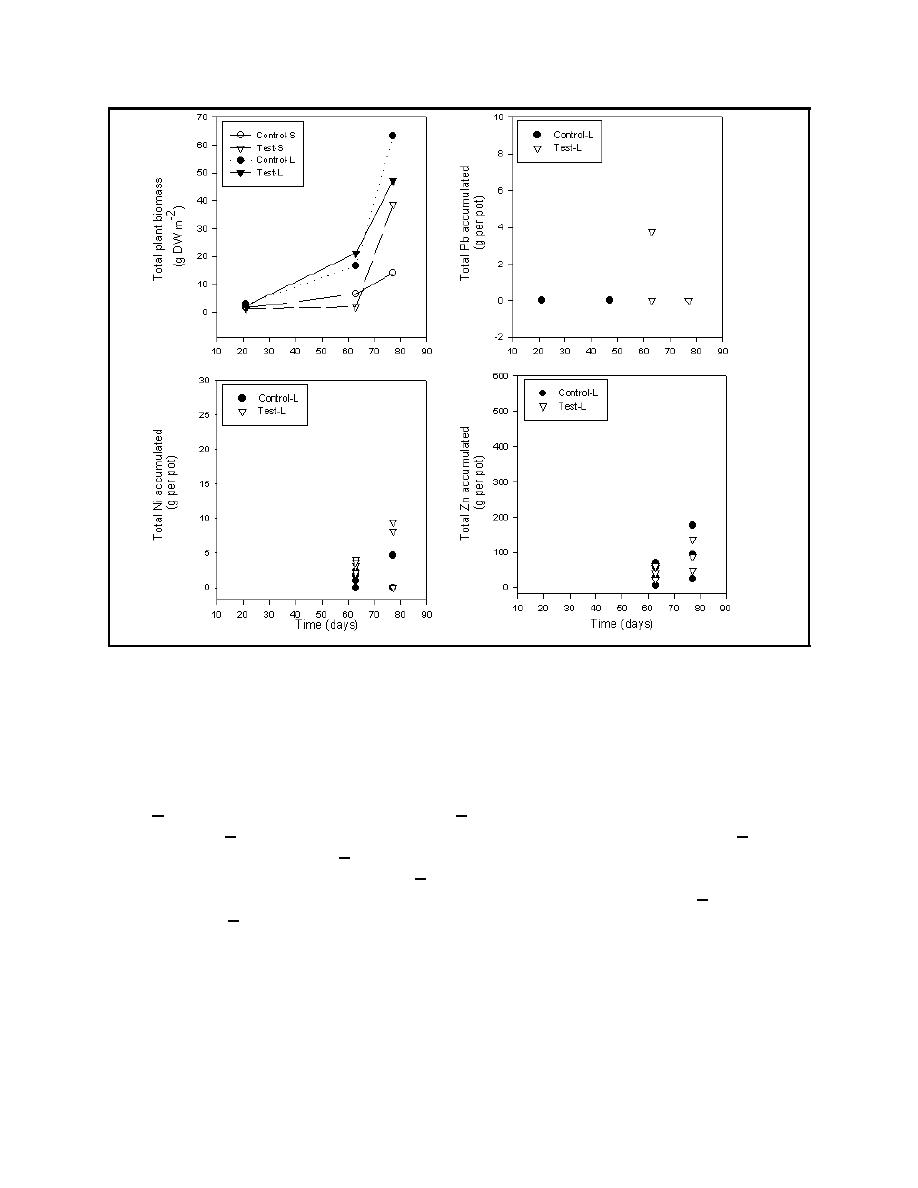 |
||
|
|
||
|
Page Title:
Figure 3. Average growth response (N = 4) of C.dactylon plants cultivated on test dredged material and control soil in 2-L po... |
||
| |||||||||||||||
|
|
 ERDC TN-DOER-C22
September 2001
Figure 3. Average growth response (N = 4) of C.dactylon plants cultivated on test dredged material
and control soil in 2-L pots, with a small (S, 0.0167 m2 ) and large (L, 0.0238 m2) surface area
(top left). Bioaccumulation of lead, nickel, and zinc was also measured; of the bioaccumulation
data, only those pertaining to pots with a large surface area are shown
Bioaccumulation. Plant species exhibited a different metal-specific behavior with respect to
bioaccumulation. C.esculentus accumulated lead from 63 days onward in the belowground biomass
(3.31 + 3.96 mg kg-1); nickel in 35 days 5.07 + 2.38 mg kg-1 in aboveground biomass and
in 63 days 12.2 + 5.27 mg kg-1 in belowground biomass; zinc from day 35 onward (176 + 7.96 mg
kg-1 in aboveground and 136 + 21.3 mg kg-1 in belowground biomass). C.dactylon initially
accumulated lead, reaching a level of 1.50 + 2.99 mg kg-1 at 35 days and subsequently depurating
it to an undetectable level. It accumulated nickel from 35 days onward up to 6.89 + 1.29 mg kg-1;
and zinc to 93.6 + 6.52 mg kg-1. None of the species accumulated vanadium or mercury. It has to
be noted that nickel and zinc accumulation in plants cultivated on the control soil was substantial
compared with that of plants cultivated on test soil .The total amount of metals accumulated in plant
biomass was usually higher in C. esculentus than in C. dactylon, with a large part stored belowground
in the former species.
Summary Plant Test Results. Both plant species may be suitable test organisms for the
inorganic chemicals of concern (COCs) in dredged material in that they survived on dredged
12
|
|
Privacy Statement - Press Release - Copyright Information. - Contact Us - Support Integrated Publishing |